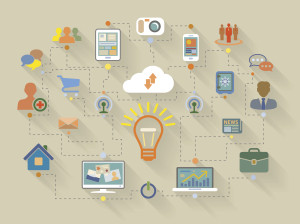Think carefully about your brand before wading into conversations during a disaster.
The Australian bushfires have become a global conversation, with celebrities and brands voicing their concern everywhere from social media to the Golden Globes. The sheer scale of this disaster and the climate change-driven dryness of this season, along with parallels to other natural disasters such as California’s string of wildfires, make it likely that we will continue to talk about this issue well into the coming months.
With such a huge impact, it’s natural that many businesses would see this as a time to share their expertise and knowledge – about what’s happening, what it means for business, and what to expect in the future. But there is a right way and a wrong way to offer expertise during a disaster. You should think carefully before wading into these conversations. If done incorrectly, you can come off as callous and insensitive, or even worse, manipulative.
To participate in natural disaster conversations in a manner that is helpful and supportive, there are a few things to keep in mind.
Do you have a reason to be here?
All types of businesses are impacted during a natural disaster, but it doesn’t mean there’s an urgency for their expertise or products. There’s a clear need for your voice if you can offer immediate assistance or can alleviate current concerns. After that, it’s about offering insights into the bigger picture of a disaster’s impact – what does this mean for the economic future of the affected area?
For example, the insurance industry, responsible for responding to claims and helping homeowners and businesses return to normal, can address many questions about how they are responding to these wildfires. Questions that consumers are asking now. Meanwhile, the automotive industry, which might see an impact in car sales from the disaster down the line, is far less likely to face urgent consumer concerns.
It’s absolutely not about you (unless it is)
If there’s ever a time to avoid inside-out thinking and messaging, it’s during a natural disaster. The consumers or businesses that you are trying to reach are dealing with potentially life-changing events – the last thing they want to hear is about you and your company. Avoid statements that lead with “I,” “me,” and “my.”
The one exception to this is if your company is directly involved in the disaster or the recovery. For example, in the case of a chemical spill or building accident. In such cases, legal may limit what your statements can focus on. Even then, it’s best to focus as much as possible on impacted consumers and what your organization is doing to support them.
Lead with empathy
Who can forget former BP CEO Tony Hayward and his disastrous “I’d like my life back” comment in the wake of the Deepwater oil spill? It made BP’s efforts to help the area recover all about him getting back to normal, and not about the hardships that residents were facing. While it was just one throwaway sentence at the end of a much longer interview, it was the only part that anyone heard.
With emotions running high, flippant comments during a disaster can bury even the best-intentioned messages. Whatever you wish to communicate, start and end with concerns for those most impacted. This isn’t the time to be glib or edgy, and this definitely isn’t the time to meme.
Offer help, not products
While it can be tempting to promote a product that would be perfect for recovery or future prevention in the wake of a disaster, proceed with caution. Consumers are primed to view such as promotions negatively or even as scams. You’re much more likely to have a positive role in the conversation if you use those products or expertise to offer help.
For years, Anheuser-Busch has periodically paused beer production to focus on producing safe, canned water, which it provides to communities after disasters. Chef Jose Andrés used his cooking expertise to organize 19,000 volunteers to serve millions of meals after Hurricane Maria devastated Puerto Rico. Both have built up a great deal of goodwill for the brands without ever making their efforts about their products.
Build community, not follower counts
Social media channels play a bigger role than ever before in communicating about and recovering from natural disasters. Australian comedian and actor Celeste Barber just raised more than $32 million to support fire companies fighting bushfires throughout Australia on Facebook, setting a global fundraising record for the platform.
This is a great way for personalities and big brands with larger audiences to use the community they’ve built to provide support. Others, however, are tying their support to their own audience building, offering a donation for each new follower, or like on a particular post. While this may offer a quick boost for social numbers, it’s an effort that runs the risk of backfiring. Consumers can see this approach as too self-serving, and your channels may just gain a lot of temporary followers that don’t really care about engaging with your brand.
Smart organizations recognize that there is a role for them to play in responding to natural disasters and it’s often one that doesn’t speak immediately to their bottom line. By focusing on the needs of impacted residents first, and their own needs second, businesses can make sure they’re seen as supporting and not exploiting recovery situations. Sacrifice a bit of sales and profit in the short run, and you’re sure to build the goodwill and trust that will best serve your business in the long run.
Opinions expressed in this article are those of the guest author and not necessarily Marketing Land. Staff authors are listed here.
Marketing Land – Internet Marketing News, Strategies & Tips
(26)
Report Post



